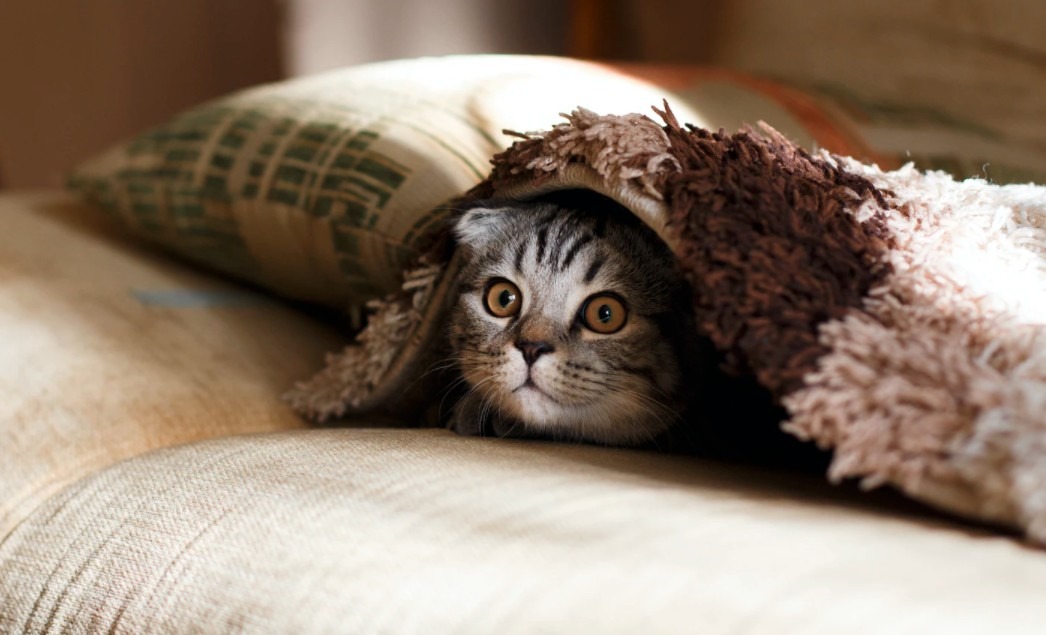Getting a pet is always a big decision. After you’ve decided on just which animal to get, you’ve got to learn all about it and figure out how to fit it into the unique structure of your home and family. Having a baby is an even bigger challenge, and so you can only imagine how difficult having both together can be. Luckily, we’re here to provide some modicum of guidance to better prepare you.
If you already have a cat at home and are expecting a baby soon, you’ll have to face slightly different challenges compared to if you already had a baby and were bringing in a cat. We’ll try to cover both scenarios to better prepare you for the inclusion of either into your home.
If You Already Have a Baby
If you already have a baby at home and are planning on getting a cat, the easiest way to go about it would be to cat-proof the house before you get your new furry friend. A few changes would have to be made to the room where the baby sleeps, and the area around it as well. For starters, get into the habit of closing the door to that room whenever your baby is inside. This way you eliminate the biggest threat to your baby; the cat getting inside.
Furthermore, removing furniture that would allow the cat to jump up and in to the baby’s crib is also recommended. And lastly, closing off the crib a bit ensures a final backup plan in case the cat does get inside without your knowledge. You can do this by installing a sort of lid roof on top of the crib, so that access from the top is closed off. Also, if the bars of the crib have too much space between them, either modify the crib or get a new one. This all might seem a tad bit excessive, but you need to remember that your baby is very helpless. The cat would rarely have ill intentions, but just cuddling next to the baby could lead to dangerous circumstances.
Also, all the preparation you will do for the cat should be done far away from the baby’s room. This would reduce the number of reasons the cat will have to go near that room. If the litterbox, the food and drink bowls, and the toys are all placed on the other side of the house, the cat will tend to stick around in that part of the house. You should also move other types of furniture that attracts cats away from your baby’s room. Scratching posts, couches to sleep under, and boxes should all be removed.
If You Have a Cat and Are Expecting a Baby
If you’ve already got a cat at home and are about to receive a baby soon, the preparation methods need to be shuffled around a bit. First off, slowly begin to change the room where you’re going to keep the baby. Make a habit of closing it off, so the cat can get used to not having access to that room anymore. If you used to keep the litterbox, or the food and drink bowls, or the cat’s toys in that room, begin to slowly move all these items out of the room.
The one thing you should remember is that almost every cat hates to experience sudden changes. This is why it is recommended to make some trips to a new house you may be moving to with your cat before making the final shift; to get the cat accustomed to the layout and feel of the place. This obviously still holds true for changes inside your house.
If the cat’s accessories need to be moved to a new location, begin the process early and take it slow. Moving the accessories a few notches every day is ideal, as too sudden a change may make the cat anxious. Once the baby’s future room has been emptied of all the cat stuff, start to keep the door closed. The sooner your cat learns to ignore the room, the better.
Also, try to bring in furniture for the baby well in advance of its arrival. Bringing in the crib and other necessities early on will only help ease your cat’s transition into accepting a new member in the house. In addition to all this, also try to get your cat accustomed to anything you will do when the baby finally arrives. Using baby powder or baby lotion a few times to get your cat used to its smell, as well as changing your sleep schedule to what you expect will be optimal when caring for the baby, both are excellent strategies to prepare your cat for your baby. If you really want to go the extra mile, play some recordings of a baby a few times a day. From incoherent babbling to shrill crying, anything you expect to encounter works.
Finally, start to sanitize the house more than usual. If your cat makes occasional trips outside the house, you need to begin bathing it more frequently as well as cleaning up after it more than usual. Also begin to wash your hands more regularly. Your cat may not pose a threat to you, but your baby’s immune system will be significantly weaker than yours.
Can the Two Not Interact?
After reading everything above, you may be inclined to believe that your cat and your baby are doomed to avoid each other for at least a year or two. Such is not the case at all. All you need is proper sanitization and careful supervision. Never ever leave your baby alone with the cat; that is just a disaster waiting to happen. Also, if your baby begins to annoy the cat, separate the two. The cat may be loving, but it can and most definitely will swipe at the baby if it gets too angry. Don’t blame the poor cat, it doesn’t know any better.
Having your baby and your cat interact with each other since an early age is optimal for getting them to love each other over the years. All you need to do is make sure to always supervise them, and step in wherever you feel necessary. That will be your call to make and you will have to judge very carefully. When in doubt, give the interaction session a short break to force a soft reset between the two.
Conclusion
Play your cards right, prepare properly and thoroughly, and the new addition to the family will go about without a hitch. Before you know it, you’ll be well trained in recognizing the needs of both your cat and your baby, especially in regards to interacting with each other.


